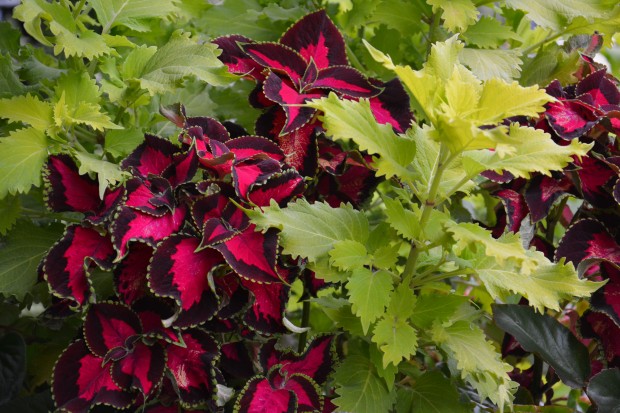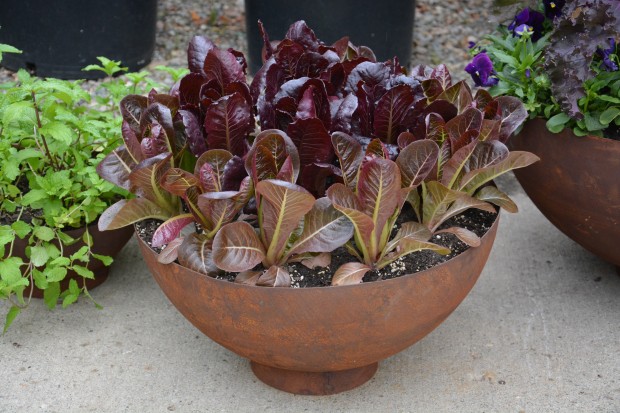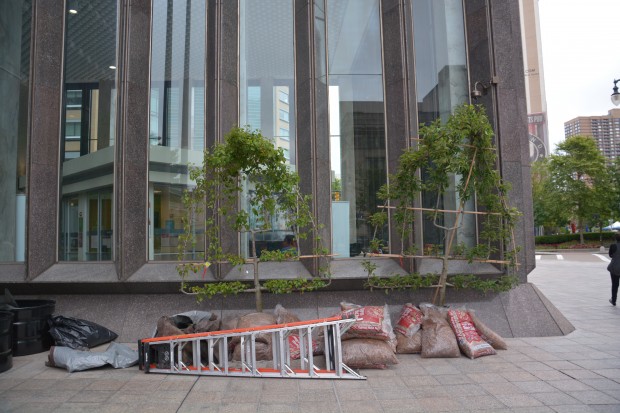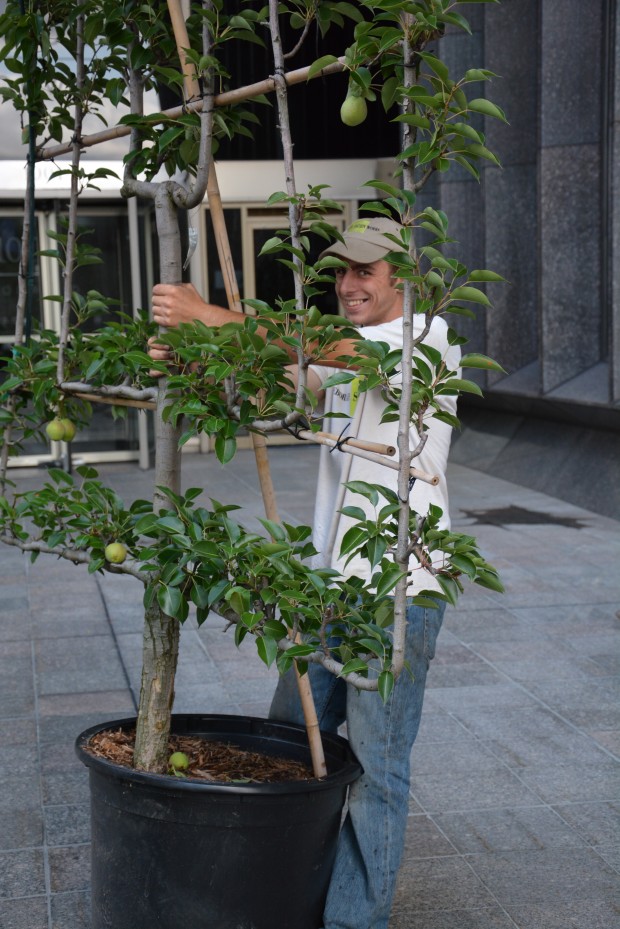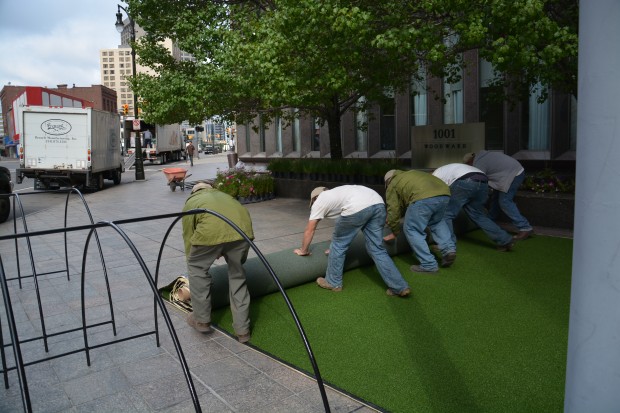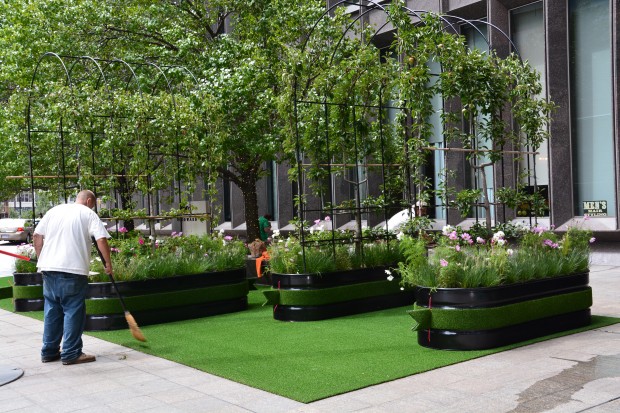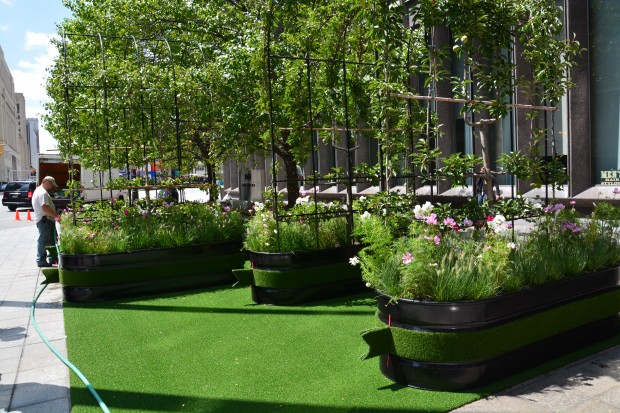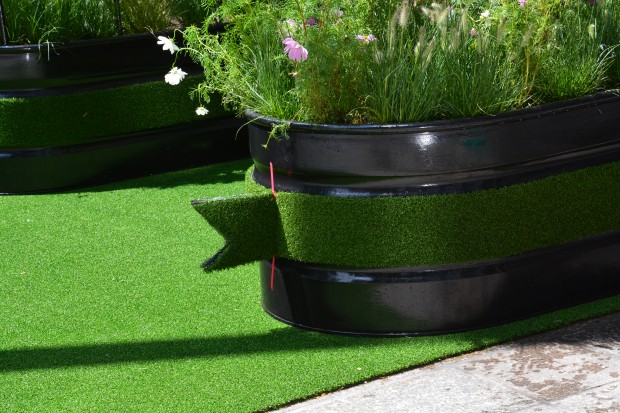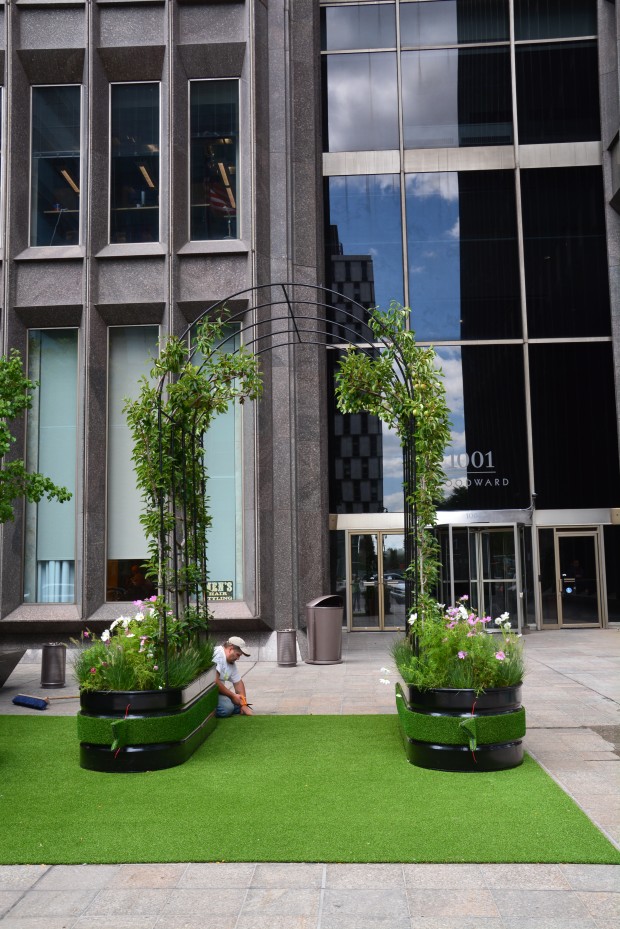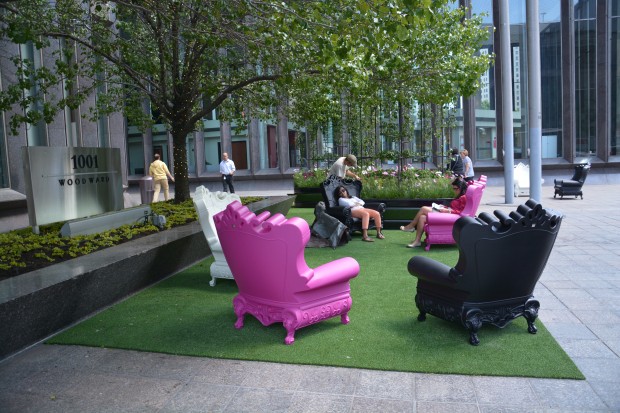 In the world of garden ornament, a container which sits on a foot is known as an urn. A foot? The rare hand carved French urns pictured above have feet. The foot is that piece which holds the body of the pot aloft. Off the ground. Imagine these pots sitting in a garden without the graceful and underscaled bases which serve no other purpose than to provide lift. An urn is any garden pot or container which includes a foot. Those of you who would have no interest in urns like this in your garden, stay with me, and hear me out.
In the world of garden ornament, a container which sits on a foot is known as an urn. A foot? The rare hand carved French urns pictured above have feet. The foot is that piece which holds the body of the pot aloft. Off the ground. Imagine these pots sitting in a garden without the graceful and underscaled bases which serve no other purpose than to provide lift. An urn is any garden pot or container which includes a foot. Those of you who would have no interest in urns like this in your garden, stay with me, and hear me out.
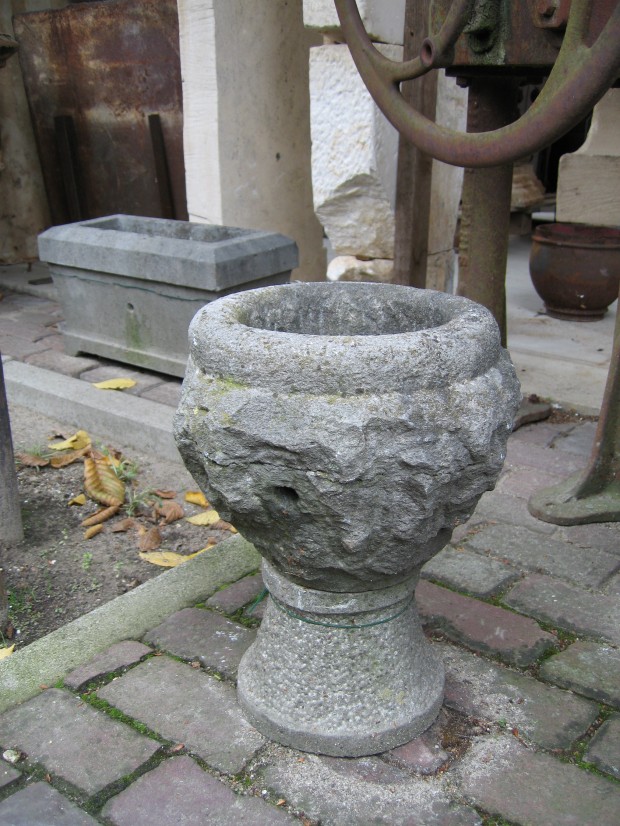 Even the most simple pot may benefit from a foot that distinguishes it, or raises it above the ground plane. If you plant bushel baskets, galvanized pails, vintage terra cotta drain tiles, contemporary concrete bowls or old bulb crates, the appearance of every garden container is improved by a foot of some sort. How so? Containers with large bottoms that sit down flat on a terrace surface might have a problem draining. Good drainage is essential for container gardening. There are lots of ways to raise a bushel basket off the ground-search out the possibilities.
Even the most simple pot may benefit from a foot that distinguishes it, or raises it above the ground plane. If you plant bushel baskets, galvanized pails, vintage terra cotta drain tiles, contemporary concrete bowls or old bulb crates, the appearance of every garden container is improved by a foot of some sort. How so? Containers with large bottoms that sit down flat on a terrace surface might have a problem draining. Good drainage is essential for container gardening. There are lots of ways to raise a bushel basket off the ground-search out the possibilities.
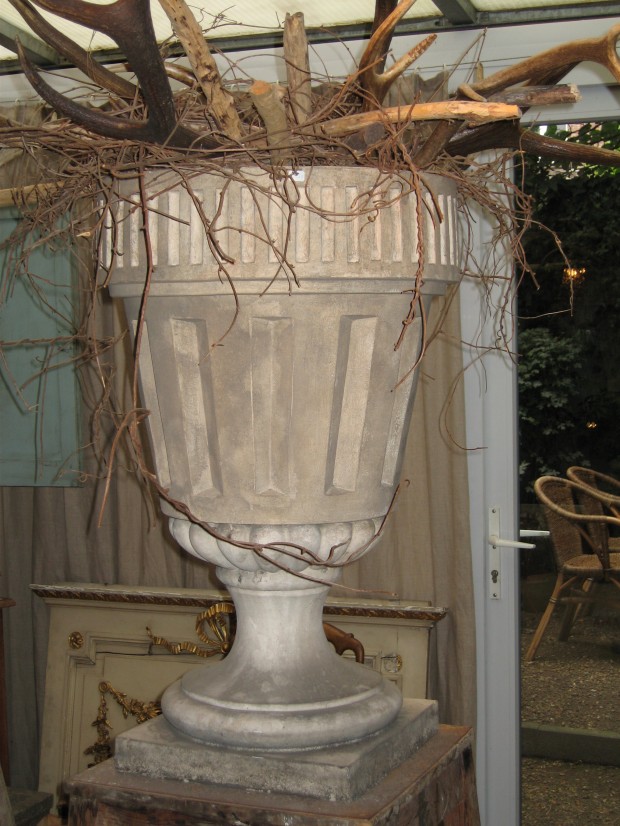 A big bottomed pot that sits down too wide and too hard on a flat surface can look down right frumpy. Imagine this vintage English stoneware urn without its foot. The curved squash like form of the top of this foot provides a graceful place for the top of this container to rest. Note that the body of the pot is separate from the foot. Minus the foot, this pot would look like it was suffering from the ill effects of gravity.
A big bottomed pot that sits down too wide and too hard on a flat surface can look down right frumpy. Imagine this vintage English stoneware urn without its foot. The curved squash like form of the top of this foot provides a graceful place for the top of this container to rest. Note that the body of the pot is separate from the foot. Minus the foot, this pot would look like it was suffering from the ill effects of gravity.
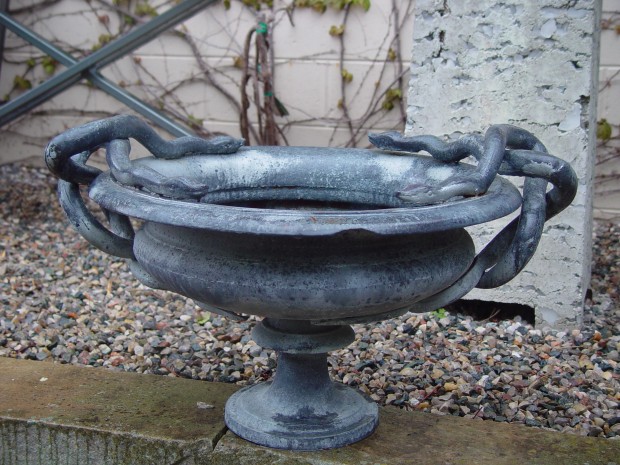 Feet make it possible for people to walk. A foot note can explain in great detail a paragraph of text. When my feet hurt, I hurt all over. Where am I going with this? A good foot on a container may provide your container plantings with a leg up. Feet are really important-no matter the venue.
Feet make it possible for people to walk. A foot note can explain in great detail a paragraph of text. When my feet hurt, I hurt all over. Where am I going with this? A good foot on a container may provide your container plantings with a leg up. Feet are really important-no matter the venue.
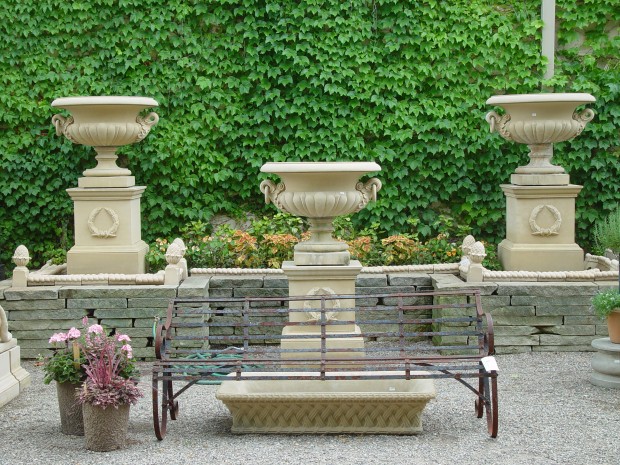 a trio of garden urns and pedestals from the David Sharp Studio in England
a trio of garden urns and pedestals from the David Sharp Studio in England
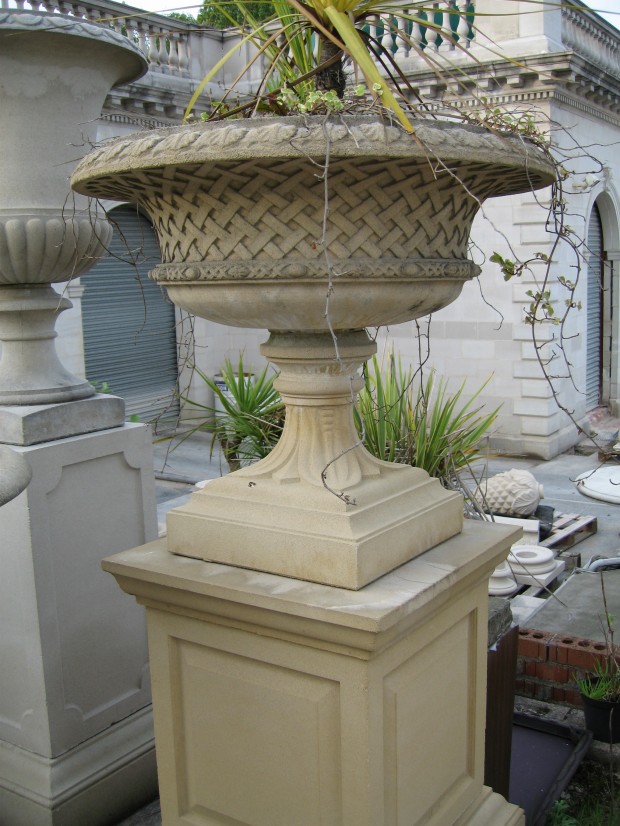 footed limestone basket weave urn
footed limestone basket weave urn
 Antique English limestone urns with attendant pedestals
Antique English limestone urns with attendant pedestals
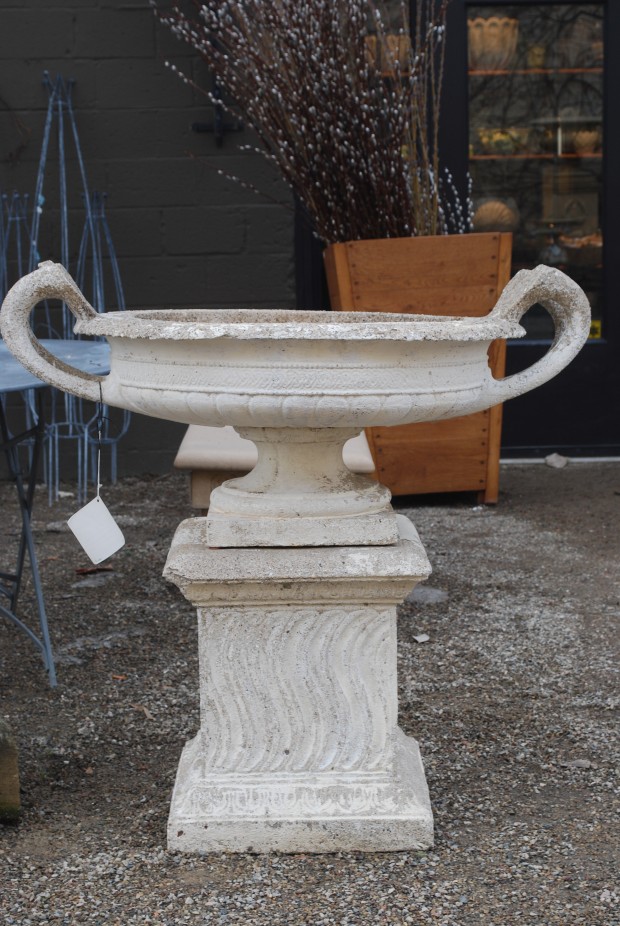 Painted American concrete urn circa 1890
Painted American concrete urn circa 1890
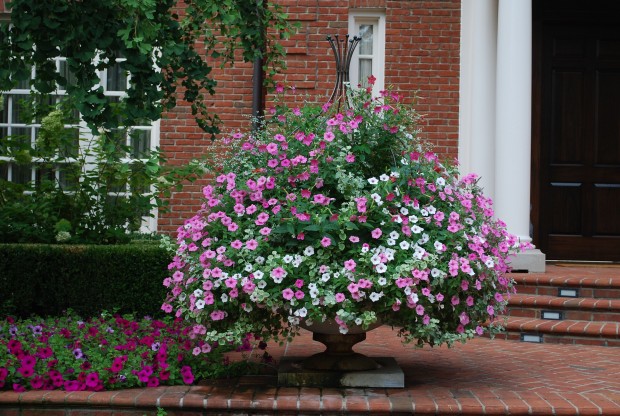 Imagine the planting in this urn, without the foot. The petunias dragging on the ground would not be such a great look. This modest foot helps this summer container shine.
Imagine the planting in this urn, without the foot. The petunias dragging on the ground would not be such a great look. This modest foot helps this summer container shine.


